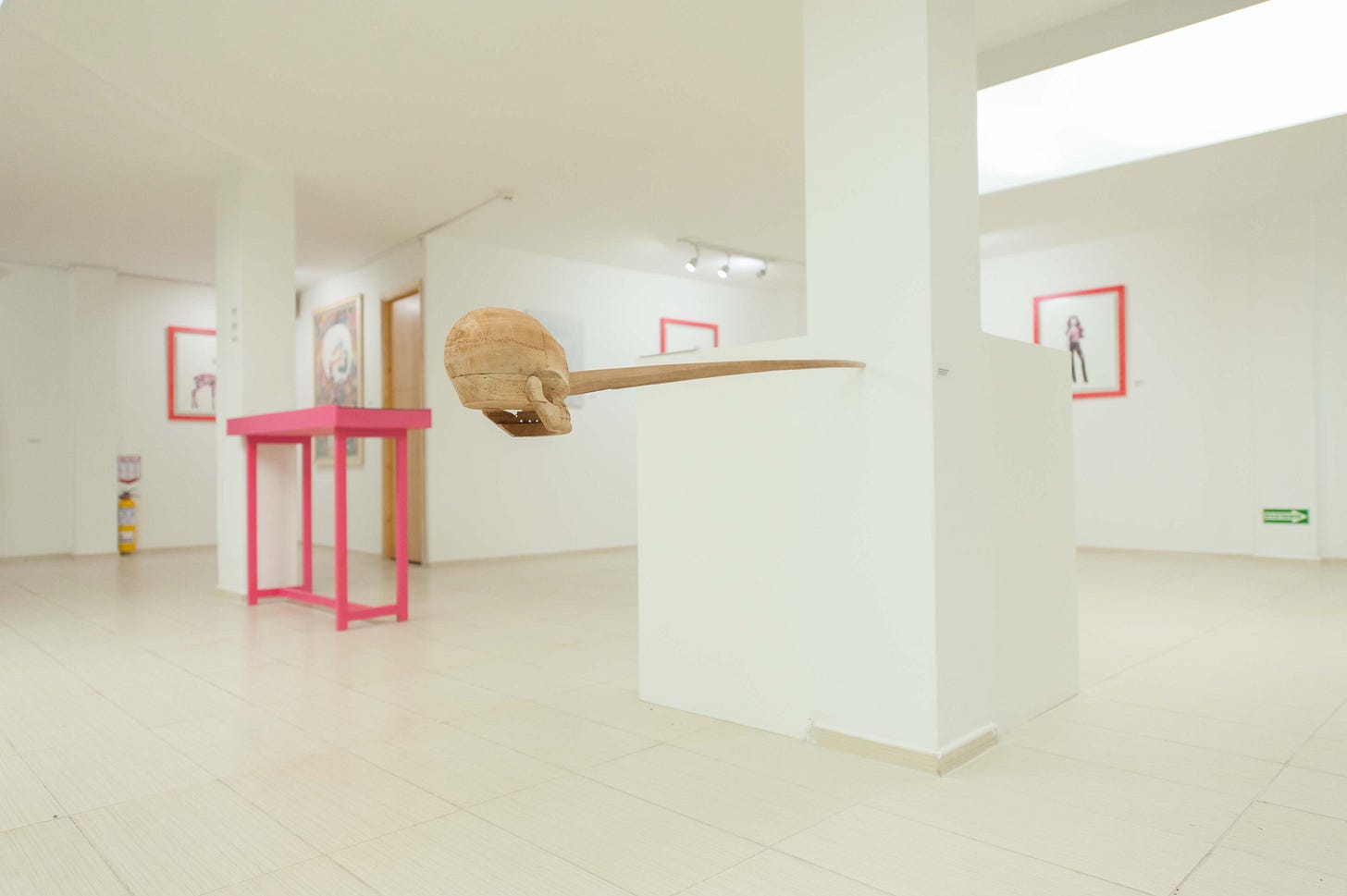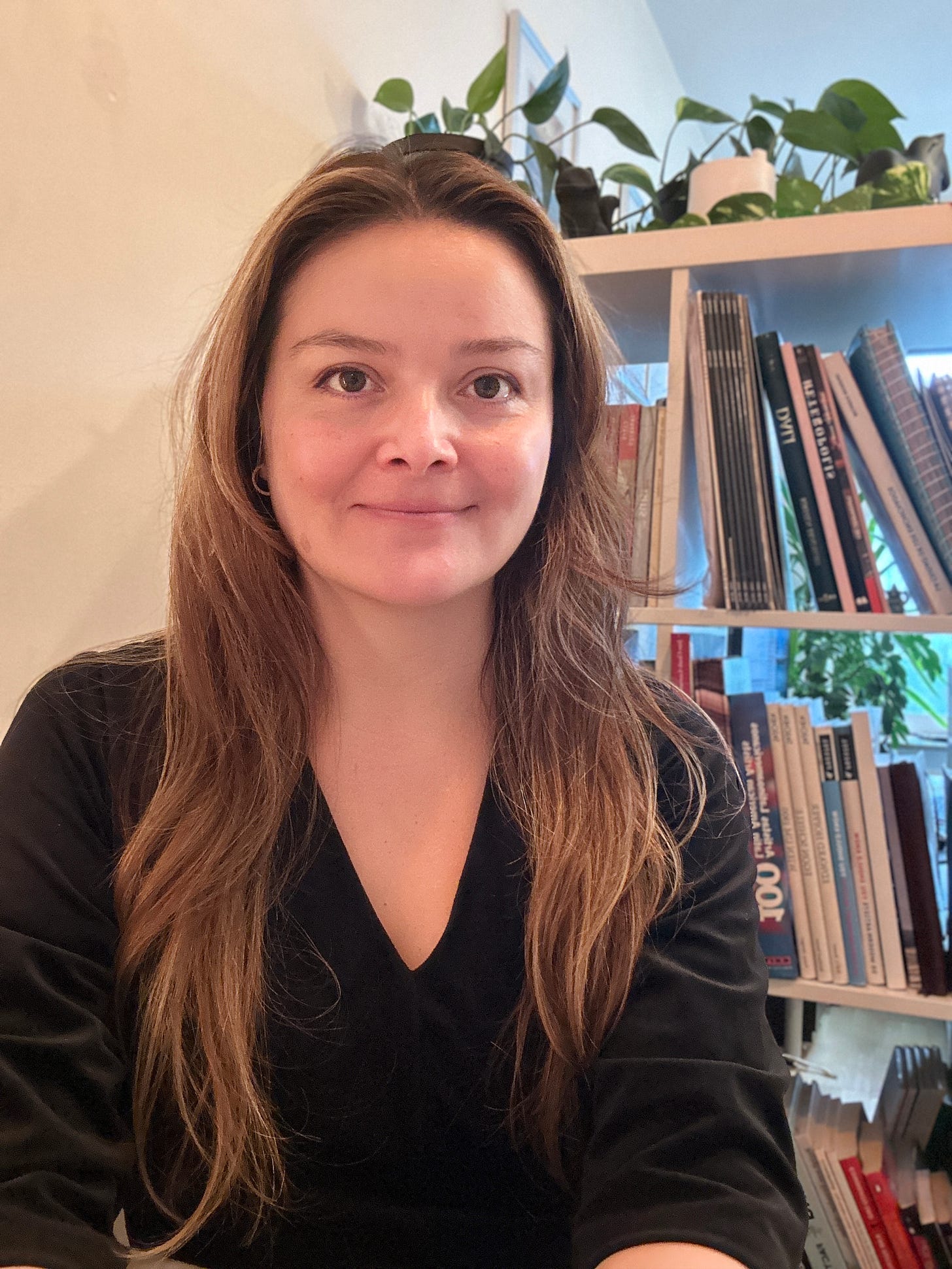We'd like to welcome you to our new column, 'Shortcuts,' which will be published at the end of each month. We'll hand over our Instagram account to artists, galleries, curators and artist-led organizations. The week will begin with a 6-question interview on our Substack platform, followed by six days of daily Instagram postings by the artists/galleries, in which the artists will freely publish one of their works in addition to their own thoughts. We at Tarantula: Authors And Art, along with you, our readers, get to sit back and enjoy the daily surprise of discovering each new work of art. Please take a moment to click here to subscribe to our Instagram if you haven't already. Now, without further ado, please welcome our first curator, Colombian born, Stockholm based Lorena Parada.
A curator designs and oversees exhibitions in galleries and museums, as well as the art and artists. The term derives from the Latin word cure, which means "to take care of." If given the chance, it can be a very creative career combining many mediums, building sets alongside the artists, and connecting music to art. Lorena Parada achieves exactly that. Her goal is to create an exhibition that will make you question your very existence. She connects worlds, for example, by bringing art from warm South America into the Nordic cold or by mixing the art of Cuban artists who still live in the past with the vibrant scene in Bogota. Whatever she displays on the walls of various international galleries and unusual settings, she has one goal: you will not leave the room feeling indifferent.
Tell us about your very first project; how did it come about?
I developed my first project after I graduated from my curating masters at the MMU in Manchester, UK. I went back to Bogota and started finding ways to enter into the art scene, to connect and be known as art curator locally. I have to say that it was difficult to enter, so I decided to return to what I knew previously to get into the flow, which was photography. I joined a diploma photography course which would take place in both Bogota and Cuba. Exciting! As I have always been fascinated by Cuba, and it might have started with my liking to their son Cubano music, so I thought why not. I met amazing talented photographers at the workshop, we shared incredible experiences in Cuba while getting to know the culture, learning how things operate, the not to dos, and experiencing a place on earth that was frozen in time, living la revolución. Once I graduated, our teacher and I curated an exhibition from the group that we brought to Kep City in Cambodia. It went well but I felt there was still more to do there. The exhibition included one photo from each photographer, and we were 15+; I wanted to show more from Cuba, paying closer attention to details and displaying multiple works from each photographer rather than just one. So after all of this amazingness, I kept in my mind that I really wanted to start curating and putting up exhibitions in the city, and I had been waiting to be hired for quite some time, so I started to put together a business plan to open my space, and that way I could start curating. I found an investor who believed in my idea, and I got it all rolling. Finally, it was time to put up the exhibition I wanted to make. I invited our teacher from the photography workshop, Santiago Escobar-Jaramillo, and two students Andrés Felipe Matiz Lopez and Emilio Aparicio Rodriguez to exhibit. Santiago exhibited his series ‘P-i-p-o-s’ and ‘Mother & Daughter,’ the first of which had photographs depicting the physical and aesthetic looks of Cuban youth and framing them in the social groupings to which they belonged, and in the latter, a series of images featuring portraits of mothers and daughters. Andrés exhibited images that reflected daily life in Cuba as a devoted documenter of Cuban reality, and Emilio displayed images from his series ‘Puños de Acero’ (Feasts of Steel), a collection of photographs capturing the Havana boxing scene. I named the exhibition ‘Back to Cuban reality’ to emphasize the journey taken to Cuba, not only the physical distance travelled, but the sensation of travelling through time to another reality in Cuba.
How do you choose artists for your exhibitions?
It depends on how and where the exhibition has its origin. If it begins with a specific subject, then I have to research and find artists who work with that subject or individual artworks that deal with that theme. I then contact the artists and invite them to be a part of the exhibition. Other times, I come across very interesting work created by artists and I feel compelled to organize an exhibition with them. Similarly, I write to them and arrange a studio visit and talk about the exhibition. Other times I create connection between artists and their work, and come up with an idea for an exhibition, and other times I am given a set of works and must come up with an exhibition title and design. It depends on where I am curating, for whom and how much creative freedom and budget I have to put it all together. Other factors include the length of time the artists have been making their art, and their constancy in doing so.
Tell us about your projects
My very first project was a gallery space in Bogotá. It was called BAC – Bogotá Arte Contemporáneo. It featured a gallery exhibition space, an art and design book shop and a cafe bistro. The main concept for the gallery was to curate exhibitions where contemporary Colombian and international artists had a dialogue. I had over 12 exhibitions in the space, and received commissions as well; those were great times. After I closed it, I became a freelance curator. Among the various jobs (gallery assistant, art sales agent, art stock sales agent) I would like to discuss three projects
The first was Advanced Majority, a collaboration with Ibon Herrera, an artist from Bogota, with whom we started putting up exhibitions in unconventional spaces, as well as giving art classes; she was in charge of the educational part of the group and I handled the exhibitions. It was short but sweet. These series of exhibitions started at CrossFit gym space which looked like a black box. It was all painted in black, floors, walls, ceiling, and it had a silver pleated 3 meters wall board that popped out nicely. I envisioned the space as an immersive experience for art exhibitions. So I mounted solo exhibitions in the space, Jennifer Fonseca ‘Verdades Dislocadas’ (Dislocated Truths), Jimmy Villegas ‘Fallas de Origen’ (Failures From The Source) and Laura Ramirez ‘Estado A-dimensional’ (non-dimensional state).
Part of this series was one final exhibition at Universidad Nacional de Colombia. We got access to a beautiful giant room and could host an exhibition for a weekend. We blacked out the space and converted it into another black box with the artworks from Fredy Forero ‘Benidorm y Sitges’ from the series National Security and Laura Ramirez ‘Into the Void V2’. The second part was with Proyecto Faenza, a group of artists based in Bogota whom I began working with in 2017. We started the open studio series in the center of the city and connected with the other artist studios in the neighbourhood, resulting in a tremendous network in this part of Bogota, as well as a series of open studios events.
The next project we developed was Video Arte Faenza, a video art festival which we produced, and I curated for three years. Incredible experience and reach. The last edition was in 2021, we received 1400+ applications and streamed 11+ hours of video art from 210 different artists, curated in 8 different programs. The screening took place in the emblematic theater Jorge Eliécer Gaitán of Bogotá. The festival included artists’ talks and workshops. The Covid-19 pandemic lockdown restrictions where just being lifted, so it was a very emotional event because after a long 1+ years of not being able to meet people socially, we could find ourselves sitting closer to each other in a theatre, enjoying video-art together again. Very emotional.
The last project is the one I’ve been developing since I moved to Sweden. I’ve had two exhibitions in Stockholm. The first was with musician Joni Ljungqvist and photographer Andrés Felipe Matiz in Frihamnstorget gallery. The exhibition was called ‘That Gift Called Space’ and presented Ljungqvist’s ambient album ‘Rymd’ as well as a screening of the album’s video, and Matiz photographs of the galaxy, stars and light painting. It was a beautiful exhibition inside of a container. And the most recent one was ‘6 degrees’ at Supermarket Art Fair with Proyecto Faenza where I met you guys. We jumped into the adventure of bringing 12 artists from Bogotá Colombia to Stockholm Sweden. More on each individual artist on this week’s Instagram takeover, but I have to say we had a couple bumps on the road, logistically speaking, not just because of the distance but also for the extensive search for traces of things other than art by the US, European and Swedish customs. Just because the art came from Colombia. But that’s a topic for another time.
What conversations do you hope your work will spark?
Any! About anything really! I, of course, want to be able to mediate and hopefully set the stage to rise more than just a feeling with the artworks and the artists. I want something to happen within the viewers, internally, while experiencing the exhibitions. I hope the exhibitions that I curate are either loved or hated. And that is how I measure if a job was well done. What I care about is that something was activated within the visitors. Our human process and how we make sense of things along the way. The so called ‘transcendence’ of our existence. How we get to make sense of this all. And experiencing that emotion of love and hatred (actually, more like ‘dislike’) is when I feel that something did its job at the exhibition.
Tell us about your future plans/projects/collaborations/exhibitions...
I am currently working on becoming a window for Latin American artists to be seen and for their work to be collected in the Nordics. The project is called LA Art Stockholm (Latin American Art Stockholm). I moved for love to Sweden, and I am currently growing roots here, we had a daughter recently, so the long-term plan is to stay and grow professionally here. One goal is to evolve from what LA Art is at the moment (e-commerce platform) to a physical space that can host artists and curators residency exchanges, exhibiting art from both Latin America and the Nordics while keeping a dialogue between them. Two opposite corners of the world, totally different cultures, and their conversations through art interest me big time. And another objective is to connect and start flowing in the local art scene as well.
What personally or professionally excites, worries, or keeps you connected?
New projects excite me a lot! The unknown and figuring it out. I love making things happen, and wrapping them up. Not sure if I am worried now, maybe at making LA Art to get where I want it to get. Time will tell (nervous wink).
Music keeps me connected. It is fascinating to discover new tunes while playing the oldies on a loop. If there is good music, it will be a good time. For sure.
Lorena Parada’s Curated Exhibitions


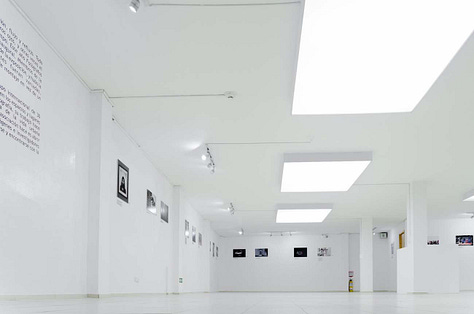
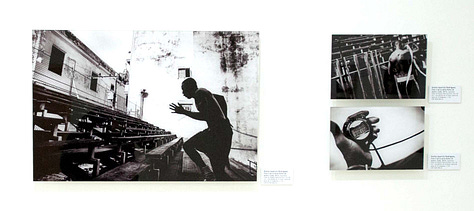

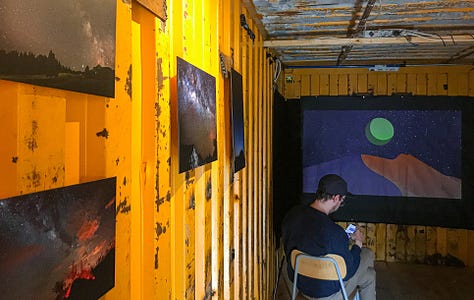


For further information about Lorena Parada please go to her Insta pages, but first spend the next week with Lorena by joining our Instagram page!




